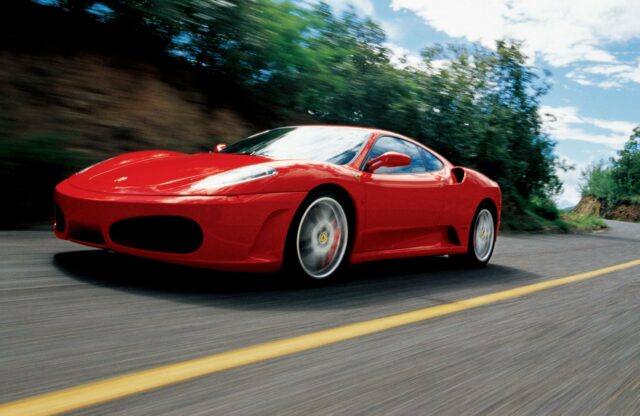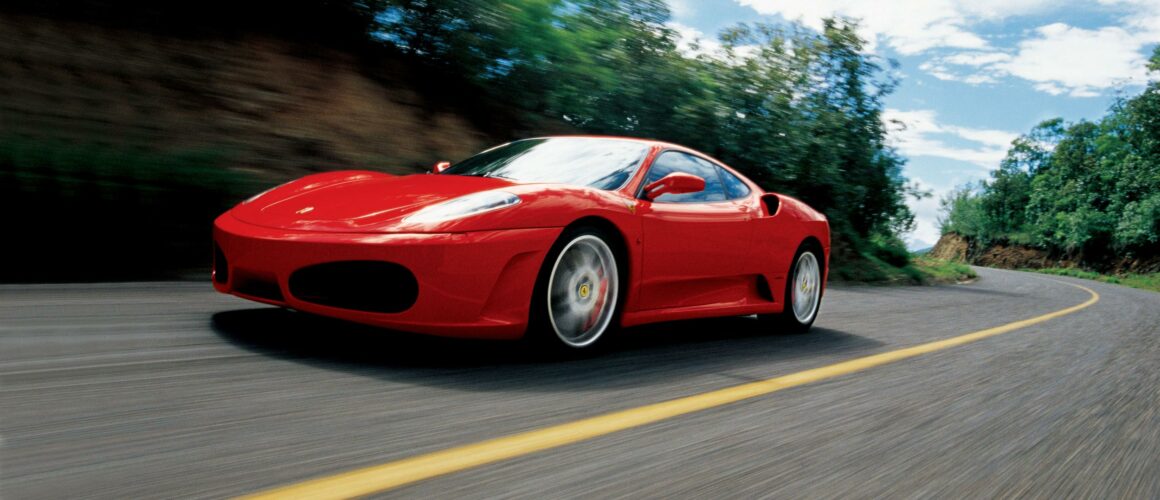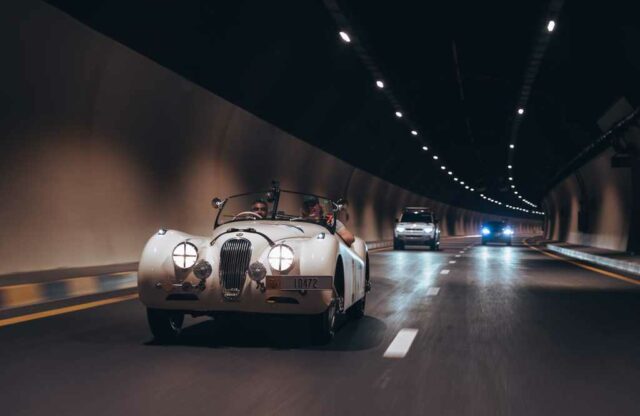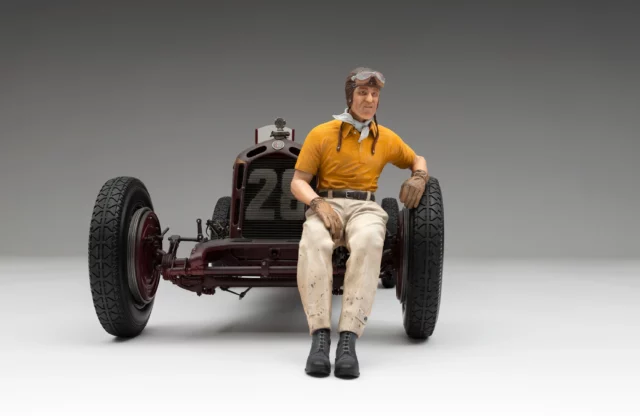The Ferrari F430 was a marked step-change in design from the curvaceous 360 Modena. Under the skin the F136 V8 was all new, producing 483bhp from just 4.3 litres. The cambelt that caused so many issues in older V8 Ferraris was finally replaced with a chain, and the far quicker F1 automated transmission lifted performance to new heights.
The 2004 launch cars were Berlinettas, with the Spider arriving the following year. Most customers opted for the much-improved F1 paddle-shift gearbox, although Ferrari offered a traditional gated manual shifter for the last time in a mid-engined V8. Around ten percent of cars are so equipped, and now carry a premium over the F1 examples.
The stripped-down 430 Scuderia was offered from 2007-on and, along with its lighter chassis, power was upped to 503bhp thanks to revised internals. A run of 499 Scuderia Spider 16M models was released the following year to celebrate the F1 Constructor’s Championship wins.
“It’s the last Ferrari you could get with a manual gearbox,” says Mike Wheeler of Rardley Motors, although he’s keen to point out that the F1 ’box is no poor relation: “People think it is an automatic, but it’s an automated-manual box – aside from low-speed manoeuvring, it works well.”
ENGINE AND GEARBOX
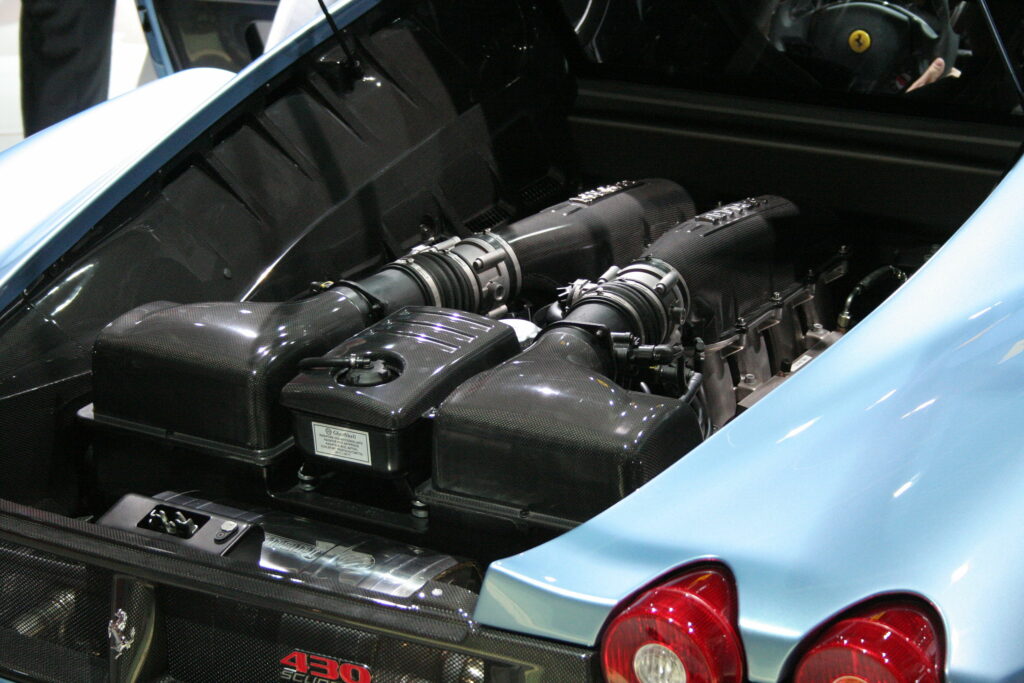
The all-new engine design shared many components with Maseratis. Most service items and parts can be sourced outside the dealer network. A general service is recommended every 6250 miles or every year. Make sure the oil has been regularly changed on cars with very low mileages. The F430 has camchains that should be checked at every service.
“Watch out for cracked manifolds, particularly on cars up to 2007,” says Mike. Although later models featured a modified system, no F430 is immune from the issue. Replacements are readily available, but get a specialist to check your car over as identifying a cracked manifold by sound alone requires a trained ear – although Mike says a slight ticking sound might indicate that a weld is cracking. Fail to spot it, and you run the risk of the bits being sucked into the engine, with horrific consequences for both it and your wallet. The original exhaust-mounting brackets can crack, and catalytic converters have also been known to break up inside their casings. Some owners fit aftermarket manifold and exhaust systems to avoid potential issues later on. Engine mounts are known to crack, too, and while parts are reasonable, it is a labour-intensive fix.
The paddle-shift gearbox was a big improvement over the earlier versions, and most customers chose this set-up. You can expect 16,000 miles between clutches, although the transmission-fluid change is equally critical every three years. Air ingress into F1 ’box gubbins can cause selection problems, and a new F1 pump is the usual fix. While you’re doing it, it’s worth fitting a later, much-improved version. F1 actuators can also fail, which is a £6000 replacement. Manual clutches last 20,000 to 30,000 miles, although figures for both the F1 and three-pedalled cars will drop with extensive track action.
While the E-diff is pretty rugged, damaged solenoids can disable the system. Replacing them isn’t too tricky for a skilled owner, however. A recall was issued to rectify an issue with leaky clutch master cylinders, which could cause gear-selection issues. Remove the undertray to see whether any fluid is dripping out of the actuator.
SUSPENSION AND BRAKES
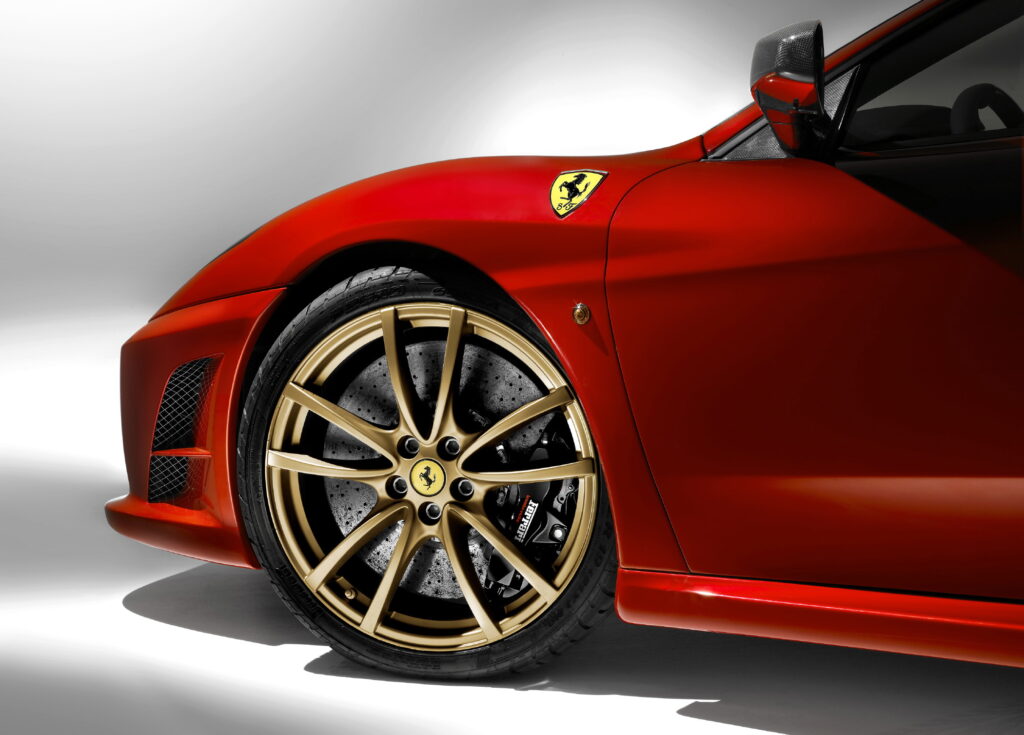
Carbon-ceramic brakes were an option up until late 2007, and became standard from then on. Both set-ups should provide hassle-free service, although long periods of disuse can seize the caliper pistons. Look out for a hard brake pedal and poor stopping performance. Carbon-ceramic brake discs should last for a very long time, but beware that the pads do cost more to replace than the combined price for standard steel discs and pads.
The suspension features a complex arrangement of bearings, bushes and dampers that are known to wear out regularly. Factory replacement parts can be costly, and many specialists offer upgraded components with an extended service life. According to owners, lowering the suspension or fitting larger-diameter wheels can upset the balance of the car and cause accelerated component wear. “Ball-joints should be viewed as a consumable item,” Mike says. With low-profile rubber, large-diameter alloy rims and stiff suspension, bent or damaged wheels are common.
BODYWORK AND INTERIOR
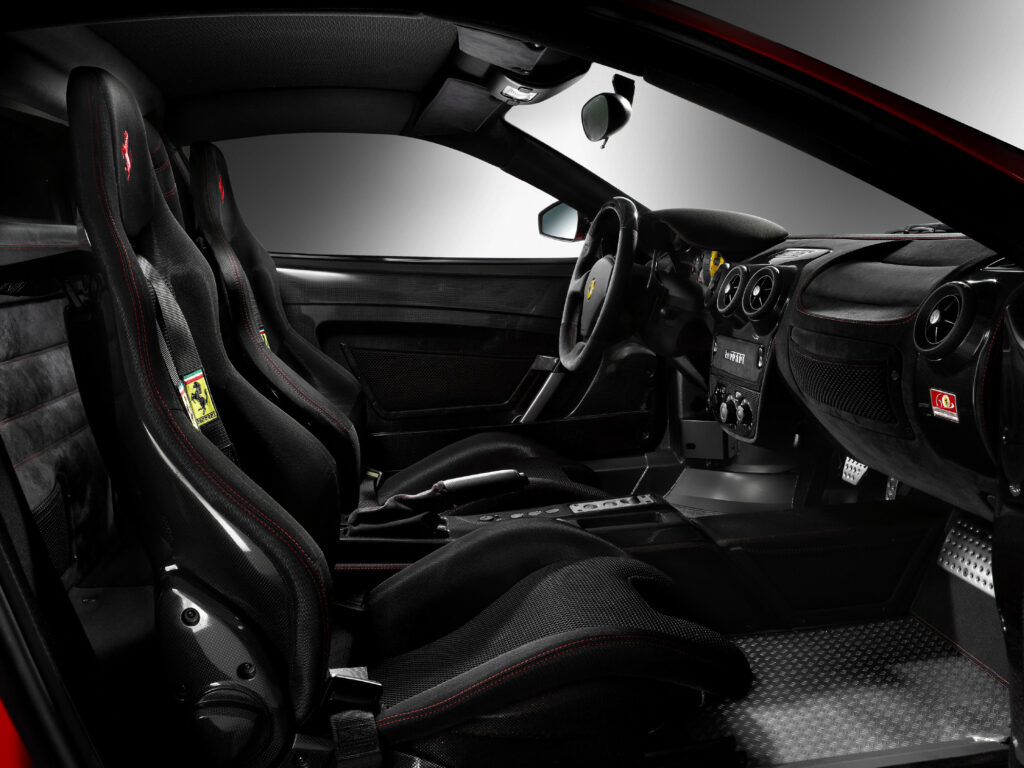
The F430 has a predominantly aluminium bodyshell, which means rust is not an issue. However, corrosion can still occur in areas where the paint has been chipped away by stones or scratches.
Check around the wheelarches, window surrounds and front bumper for a bubbling paint finish. The rear buttresses can also exhibit signs of corrosion.
The F430’s cabin was a big step up from those of its F355 and 360 predecessors, and the build quality is far superior. Most of the materials and surface coverings wear well and should not show any signs of excessive wear and tear. “F430s do suffer from sticky switches, which just needs cleaning off,” says Mike.
Door handles can sometimes work loose and the mechanism may require re-tightening. Electronics are more reliable than in earlier Ferraris, too, but a nearly flat battery can cause intermittent issues.
Check the soft-top alignment on Spiders; if the frame is bent or damaged, the roof can become stuck. The fabric top should be in near-perfect condition, and if there’s wear or tear then factor this into your haggling. Repairs are expensive.
WHICH TO BUY
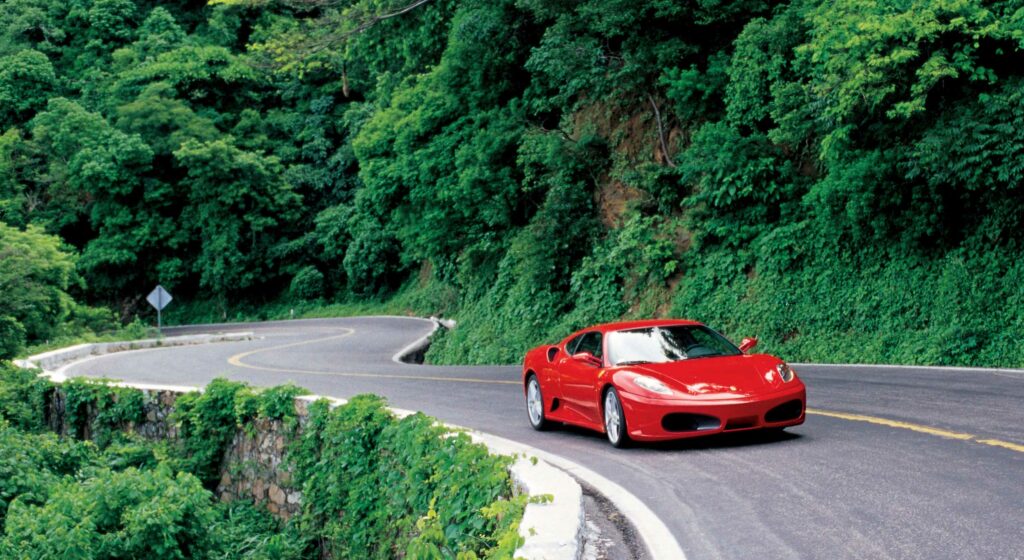
The F430 is a fantastic modern classic offering serious pace and daily usability. Good reliability and few inherent issues mean there are a few out there with higher-than-expected mileage, but as long as the service history is sound, this could be a cost-effective way to Ferrari ownership – especially if it is a left-hand-drive example.
Be wary of cars with multiple owners and patchy maintenance, because repairs are predictably costly. Do have a specialist give your potential purchase a once-over.
Ferrari got the F430 right from the beginning, so you don’t need to avoid the early cars. The usual red/cream colour combo is the most popular, while the rare manuals can command a £10,000 price premium over the F1-equipped models.
“Although manuals are worth more, F1 cars are worth a look,” says Mike. “Those gearchanges really are very exciting.” The Scuderia and especially the limited-edition Spider 16M have long commanded stratospheric prices, and while they do offer a more intense driving experience, few owners actually drive them. If you intend to use your F430, stick to the regular Berlinetta or Spider – you’ll hardly feel short-changed as you hit 7000rpm and beyond…
WHAT TO PAY
2006 Ferrari F430 F1 Coupé (UK)
Fair: £51,000
Good: £68,600
Excellent: £82,700
Concours: £101,000
2006 Ferrari F430 F1 Coupé (US)
Fair: $99,800
Good: $116,000
Excellent: $149,000
Concours: $182,000
SPECIFICATIONS
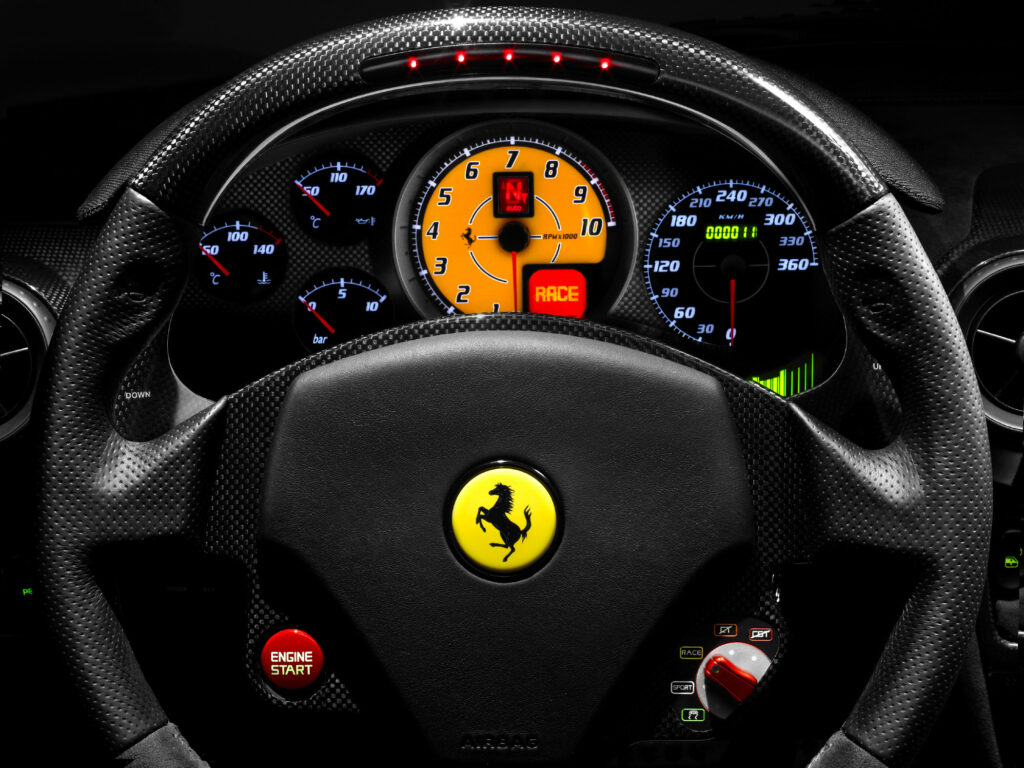
4.3-litre V8 (F430 Berlinetta)
Power: 483bhp
Top speed: 196mph
0-60mph: 3.7 seconds
4.3-litre V8 (Scuderia)
Power: 503bhp
Top speed: 203mph
0-60mph: 3.4 seconds
